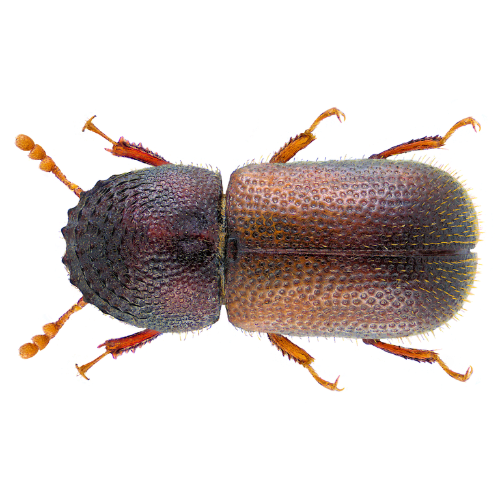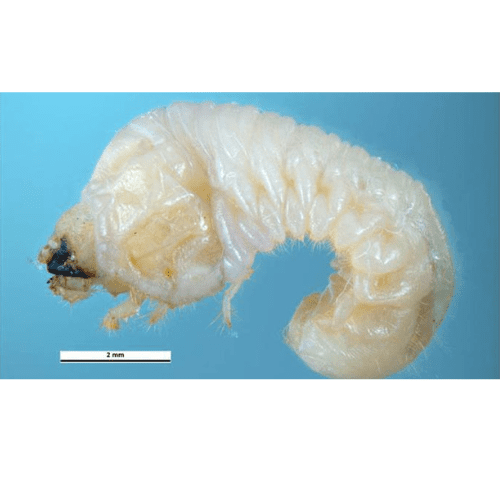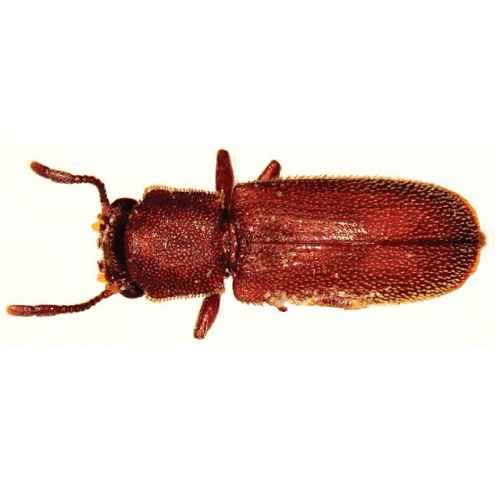


Powderpost beetles are small insects that can cause significant damage to wooden structures in homes. Early detection of powderpost beetle damage is essential for preventing extensive harm to your property. Spotting small, round exit holes in wood can be one of the first signs of an infestation.
These beetles lay eggs in cracks or pores of wood. When the larvae hatch, they burrow through the wood, leaving behind powder-like frass. Homeowners often notice fine sawdust near the damaged wood, which indicates the presence of these pests.
Wood damaging insects like powderpost beetles thrive in wood with high moisture content. Keeping your home dry and well-ventilated can help prevent these beetles from settling in. Regularly inspecting your wooden structures, especially in basements and attics, can catch an infestation before it worsens.
Recognizing Powderpost Beetle Damage
Powderpost beetles can cause significant damage to wood structures. Identifying their presence early is key to preventing extensive damage.
Physical Characteristics of Damage
Powderpost beetles typically leave behind small exit holes in wood, often about 1/16 to 1/8 inch wide. These holes are usually round and uniform. Alongside the exit holes, frass or fine powder can be seen. This frass is created as the larvae tunnel through the wood. The wood itself might also have internal tunnels that weaken its structure.
Damaged wood often feels brittle and can break apart easily. The tunnels inside the wood may not be visible without cutting into the wood, but the surface signs such as holes and frass are clear indicators of an infestation. These signs are important for homeowners to watch for to catch an infestation early.
Comparing Beetle and Termite Damage
Termite damage often differs from powderpost beetle damage in a few key ways. Firstly, termites tend to create mud tubes along surfaces, which powderpost beetles do not. These tubes are used by termites to travel between their nest and food source.
Termite damage typically appears more like hollowed-out wood, often with soil or mud packed inside. On the other hand, powderpost beetles leave behind a fine, powdery frass and small exit holes. The damage from beetles tends to be cleaner, without any mud.
Recognizing these differences can help homeowners identify the type of infestation they are dealing with and take appropriate action. Keeping an eye out for these distinct signs of wood damage is crucial for maintaining the integrity of wood structures.
Life Cycle of the Powderpost Beetle
The life cycle of the powderpost beetle involves several stages: egg, larva, pupa, and adult. Each stage plays a significant role in the infestation and damage caused by these pests.
From Egg to Adult Beetle
Powderpost beetles start as tiny eggs laid in cracks or old wood. These eggs hatch into larvae, which are the most destructive stage. Larvae feed on the wood for several months to years, depending on conditions. Larvae then enter the pupal stage, developing into adult beetles. After emerging as adults, they bore exit holes to come out. The adults then mate and lay more eggs, continuing the cycle. This cycle can repeat numerous times, causing prolonged damage.
Behavior and Development
Larvae of lyctid powderpost beetles prefer hardwoods, while anobiid powderpost beetles target softwoods. True powderpost beetles thrive in dry, seasoned wood. Larvae create networks of tunnels as they feed, weakening the wood structure internally. Infestations often go unnoticed until adult beetles emerge. The distinct, fine powder around exit holes is a key sign of their presence. Understanding the behavior and development process aids in properly identifying and treating an infestation.
The life cycle stages of powderpost beetles vary in duration:
| Stage | Duration |
|---|---|
| Egg | 1-2 weeks |
| Larva | Months to several years |
| Pupa | 2-4 weeks |
| Adult | 1-3 months |
Recognizing these stages and behaviors is crucial for effective pest management.
Identifying Powderpost Beetle Species
Identifying powderpost beetle species is crucial for homeowners to take the right steps for prevention and treatment. Common types include Bostrichidae, Lyctidae, and Anobiidae, each with distinct features and behaviors.
Differences in Appearance
Powderpost beetles have different appearances based on their species. Bostrichidae are a reddish-brown or black, with a cylindrical body and a noticeable head.
Lyctidae, often called true powderpost beetles, are usually reddish-brown and have a flattened body with long, slender antennae.
Anobiidae are generally brown and have a humpbacked shape, making their thorax appear raised.
Homeowners can look for these characteristics to determine the specific type of beetle they may be dealing with.
Species-Specific Behaviors
Each species has behaviors that help in identification. Lyctidae prefer hardwood like oak or ash, creating fine, powdery frass. They usually infest wood that is less than 5 years old.
Bostrichidae invade both hardwood and softwood, and their frass is more coarse. They tend to create larger exit holes.
Anobiidae are often found in older, moisture-damaged wood, including structural timbers. The frass they leave behind has a gritty texture. Recognizing these behaviors helps in pinpointing the beetle species causing damage.
Frequently Asked Questions
Homeowners often have many questions about powderpost beetles and how to handle an infestation. Below are answers to some of the most common concerns.
How can homeowners identify the presence of powderpost beetles in their property?
Homeowners can look for small, round holes in wooden items, which are exit holes made by adult beetles. Fine, powdery wood dust near these holes is another sign. Beetles are more active in the spring and summer, making these signs easier to spot.
What are effective treatment methods for eradicating powderpost beetles?
Treatments for powderpost beetles include chemical sprays and fumigation. Borate-based products can be applied to kill larvae and prevent future infestations. In severe cases, professional pest control services may be required.
Are there visible signs that indicate powderpost beetle damage on wooden structures?
Yes, signs of damage include tiny exit holes and piles of fine wood dust (frass). Infested wood might also have a slightly hollow sound when tapped. Checking hidden areas like crawl spaces and attics can reveal more signs.
Can powderpost beetles remain dormant, and if so, for how long?
Powderpost beetle larvae can remain dormant within wood for several months to several years, depending on environmental conditions. They continue to feed inside the wood before emerging as adults.
Will homeowner’s insurance typically cover damage caused by powderpost beetles?
Most homeowner’s insurance policies do not cover insect damage, including that from powderpost beetles. It’s important to check with the insurance provider to understand what is and isn’t covered.
What are the estimated costs associated with professional powderpost beetle extermination?
The cost of professional extermination can vary widely. It generally ranges from a few hundred to several thousand dollars, depending on the extent of the infestation and the treatment methods used. Getting multiple quotes from different pest control companies can help manage costs.
Why You Should Call STL Pest Control for Service
At STL Pest Control, we understand the serious damage that powderpost beetles can cause to your home’s wooden structures. Our expert team is equipped with the latest tools and knowledge to effectively identify and eradicate these pests. We offer comprehensive inspections to pinpoint infestations early and provide customized treatment plans that target the beetles at every stage of their life cycle. With our services, you can be assured of a thorough and lasting solution, safeguarding your property from further damage. Don’t let powderpost beetles compromise the integrity of your home—call STL Pest Control today for expert help and peace of mind.

